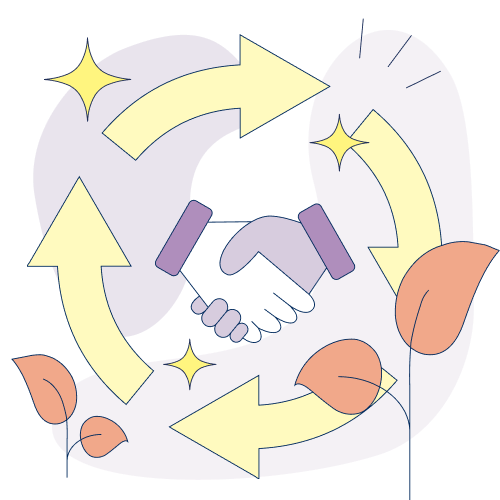
Every year at U of T the First Nations House – Indigenous Student Services – hosts Indigenous Education Week, a week for education, community, and engagement with Indigenous culture and history. One of our team members, Tiffany, attended an event and shared her reflections on why storytelling is impactful for cultural preservation.
Written by Tiffany Cao, Research Lead, Honours Bachelor of Science, Environmental Science and Human Geography.
About Indigenous Education Week
Every year, the First Nations House—Indigenous Student Services—hosts talks, events, and workshops about topics related to Indigenous history and culture. This year’s theme for Indigenous Education Week, Fashion and Regalia, highlighted the importance of representation and education through fashion. This theme showcased and celebrated traditional Indigenous art, style, and identity through an anti-colonial lens.
Reflections on Inuit Fashion

On Wednesday, November 1st, I attended Inuit Fashion with Naulaq LeDrew. In relation to Inuit Fashion specifically, Naulaq LeDrew shared memories of helping her mother prepare seal fur and skin to make clothing. However, LeDrew’s talk went beyond just garment creation. It became a talk coloured by nostalgic and engaging stories highlighted by childhood memories. LeDrew explained through those memories that every part of a seal can be used by the members of her community, saying that someone going seal hunting with a dog team might use the blubber to cover injuries. LeDrew also discussed how she and her mom prepare seal skin and fur for sewing, and how her community eats raw seal for food.
A memorable moment for me was when LeDrew and her childhood friend reminisced on why, as Inuks, they chose to live in the south. LeDrew enthusiastically responded that she decided to live in the south because she loves sharing her culture and asserting the importance of people engaging in their culture to maintain it. This insight resulted in a moment of personal reflection, allowing me to acknowledge the reality of colonialism in LeDrew’s community, and how many Inuk were forgetting or never learned their language growing up. Their reminiscing concluded with a sense of hope shared between two friends. They celebrated small steps of progress as their language and culture become more prominent in the settler spaces that is Canada.
Learning Through the Lens of Fashion
Historically, the control of Indigenous peoples’ physical presentation suppresses cultural identity and cultural genocide in Canada. For example, a customary practice in Residential Schools involved stripping Indigenous children of their clothing and forcing them to wear European styles. In some cases, Residential School survivors would tell stories of having their braids cut off and heads shaved.

During Indigenous Education week, I found that fashion acted as an entryway for storytelling. The garments and accessories represent pieces of history because each comes with its own story. I found that seeing or touching the pieces allowed me to connect to these stories. For example, LeDrew shared fond memories of stepping on seal fur to soften the skin and how her mom used an ulu to scrape the skin and soften it further. After I felt the softness of the seal fur, this made LeDrew’s story even more vivid.
When I attended LeDrew’s talk and learned about the history and stories behind using seal skin to make clothing, what stood out to me, including the seamstress techniques, was the history behind them. In particular, the sense of love and community that radiated from years of tradition, and the harsh truths of how colonialism disrupted these traditions. While the process of truth and reconciliation requires acknowledgment of hardships and oppression that Indigenous communities face, it is important to see the knowledge and beauty that Indigenous communities add to the world.
Learning with the Community

As Indigenous Education Week concludes, one of the many ways we can show support to Indigenous communities is to engage, support and learn about Indigenous cultures and histories. Follow Indigenous artists, support Indigenous businesses, and continue to learn and reflect on the importance of preserving Indigenous cultures as part of reconciliation efforts.
Ways to engage at U of T:
- Connect with First Nations House Indigenous Student Services: https://studentlife.utoronto.ca/department/first-nations-house/
- Take a course about Indigenous histories and culture: https://thevarsity.ca/2022/03/27/u-of-t-indigenous-courses/
Ways to engage in the local community outside U of T
- Learn more about Naulaq LeDrew and her work: https://www.inuitartfoundation.org/profiles/artist/Naulaq-LeDrew
- Support a local Indigenous business:
- Support and learn about Indigenous communities and the preservation of diverse Indigenous cultural heritage: https://fpcf.ca/what-you-can-do/
Learn about the history of cultural suppression in Canada:
- Assembly of First Nations. (2021). Impacts of Contact. It’s Our Time: The Assembly of First Nations Education Tool Kit. https://education.afn.ca/afntoolkit/web-modules/plain-talk-3-impacts-of-contact/impacts/
- Ottmann, S. (2020). Indigenous Dress Theory and Dress in Canadian Residential Schools. Fashion Studies, 3(5). https://doi.org/10.38055/FS030105
- Reclaiming Power and Place. (2019). National Inquiry into Missing and Murdered Indigenous Women and Girls. https://www.mmiwg-ffada.ca/wp-content/uploads/2019/06/Final_Report_Vol_1a-1.pdf
References:
- Ottmann, S. (2020). Indigenous Dress Theory and Dress in Canadian Residential Schools. Fashion Studies, 3(5). https://doi.org/10.38055/FS030105
- Reclaiming Power and Place. (2019). National Inquiry into Missing and Murdered Indigenous Women and Girls. https://www.mmiwg-ffada.ca/wp-content/uploads/2019/06/Final_Report_Vol_1a-1.pdf
- What is the Ulu used for?. (2021). Proudly Indigenous Crafts & Designs. https://proudlyindigenouscrafts.com/2021/02/15/what-is-the-ulu-used-for-2/
0 comments on “Indigenous Education Week: Storytelling Through Fashion”